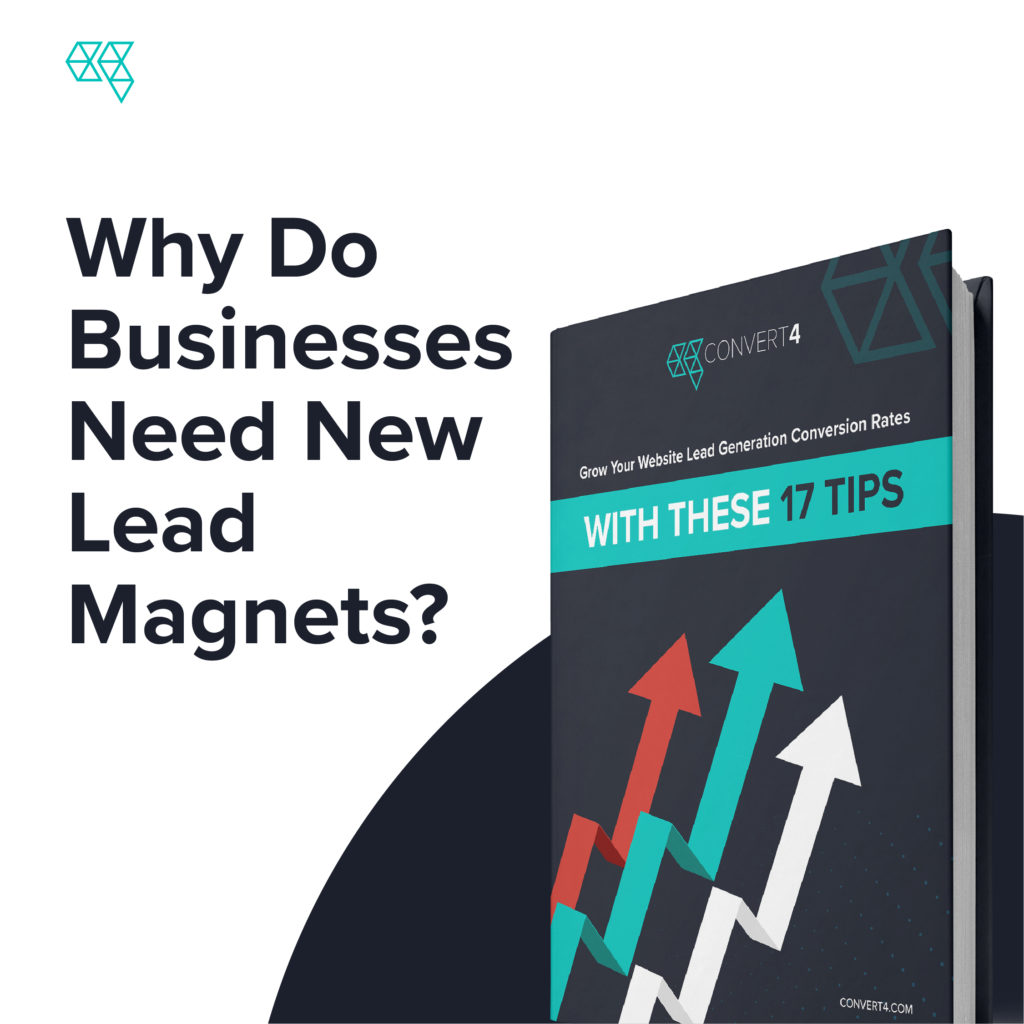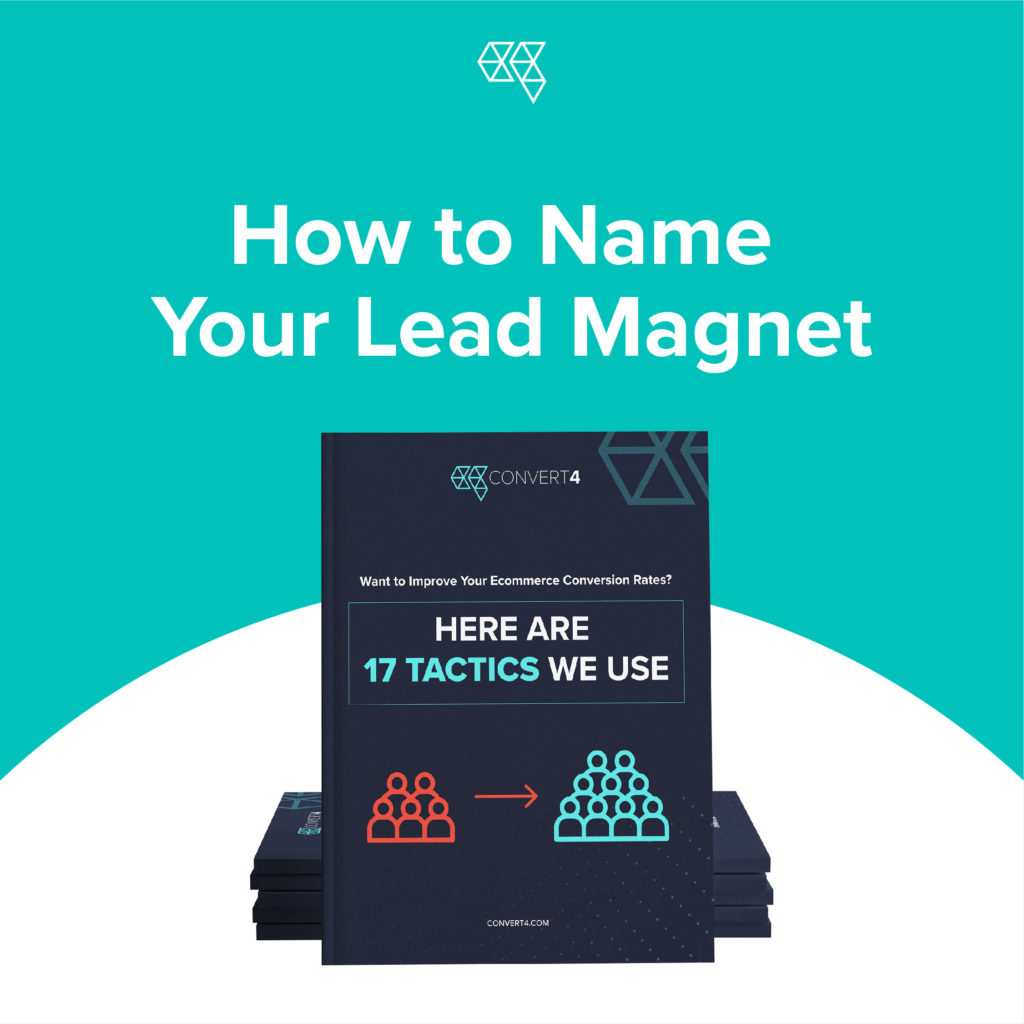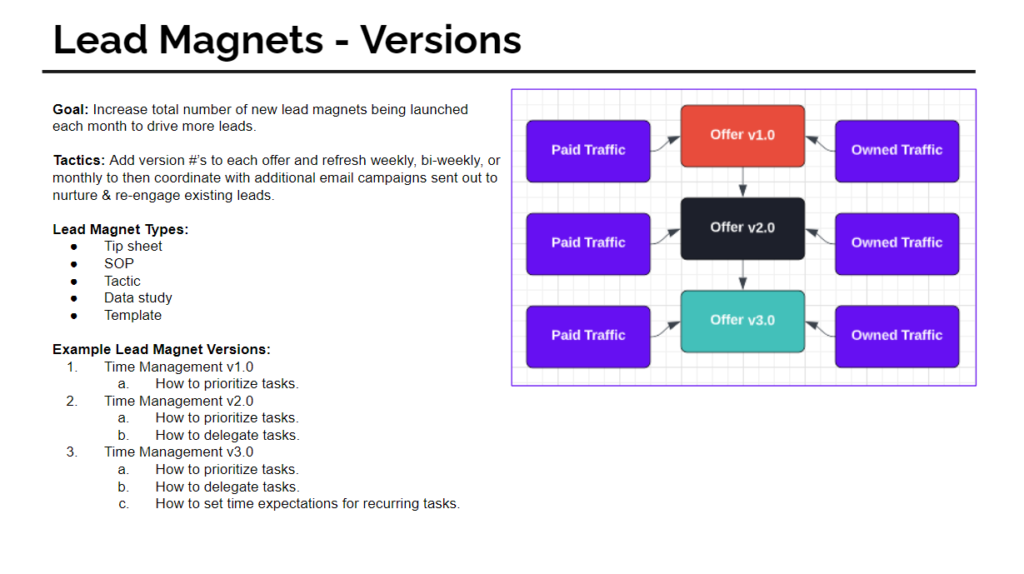This is a guide to inform users of how to create lead magnets for their service-based businesses.

What Are Lead Magnets?
Lead magnets are free offers designed to entice prospective customers to give you a piece of contact information—typically their name, email address, or phone number. Common lead magnets are free downloads like PDFs. Because people are hesitant to give out their contact information to just anyone, lead magnets assure them that they are getting something worth their time, effort, and personal information.

Why Do Businesses Need New Lead Magnets?
There are a several reasons your business needs new lead magnets.
For one, lead magnets make a marketer’s job easier. When you can offer something that buyers want or need, they’re more likely to volunteer their contact information to you.
Two, marketing KPIs like cost per lead are rising. That means you can better control costs with new lead magnets. Potential customers who shared their contact information will in turn be interested in your paid offers. Marketing CPMs are also on the rise, making lead magnets an increasingly cost-effective way to attract new customers. When your target audience is tired of seeing the same material over and over, new lead magnets can get them interested again.
Finally, when competitors are publishing more cutting-edge content, new lead magnets give you the opportunity to take back control and establish yourself as the industry-leading expert.
Being an industry leading expert gives consumers more confidence in your brand, thus making closing the deal much easier.

How to Research New Lead Magnets for Your Business?
Ask questions like:
- What new services are being launched?
- What market trends are going on?
- What feedback is sales or customer service hearing from prospects/clients? What do they want/need? What problems do they have?
- What keywords are being searched with high volume in Google?
- What information can we take from competing YouTube channels or blogs?
- What questions are being asked by our target audience from Quora, Reddit, and other social media platforms?
Up next, how to use audience personas to build lead magnets.

Audience Persona
Use an in-depth questionnaire to build a detailed audience persona. Audience personas are built to identify what needs you’ll have to solve to attract your potential audience’s attention.
For example, say you want to target real estate agents. Most real estate agents struggle with time management; therefore, you’d want to create a lead magnet with techniques or tips to solve time management issues.
The more in-depth and thorough your audience persona, the easier it’s going to be to create new lead magnet ideas.

Value Proposition
Your value proposition is ultimately the reason you’re persuading people to share their information with you. It’s always easiest to collect someone’s information if you’re offering them something specific that they already need. Some examples of value propositions and how they pair with:
- Target persona – Who we’re targeting.
- Persona’s pain points, wants, desires – Defining what information we’ve learned to attract and persuade our target audience into downloading our lead magnet.
- Ad copy – Example content that’s paired with the lead magnet for context.
- Lead magnet ideas – Example lead magnet idea based on persona pain points, wants, and desires.

Examples of Value Propositions With Pain Points, Ad Copy, and Lead Magnets:
- Value Proposition Example #1 – MailChimp: All-in-one email marketing tool to automate workflows and drive more leads.
- Example Persona – A digital marketer hears from their boss that they need an email marketing tool to help with automation and to drive more leads from email.
- Pain Points, Wants, Desires:
- Not enough leads.
- Managing email takes too much time.
- Tired of doing the same repetitive tasks.
- Ad Copy – “Drive leads while automating your workflows, a marketer “piece of heaven.”
- Lead Magnet – 15 Email Headlines That Get the Click (Free Download)
- Value Proposition Example #2 – Lyft: Earn as a driver or be picked up and delivered anywhere.
- Example Persona – A person arrives in a different city on vacation and could not rent a vehicle and needs to go downtown 10 miles away.
- Pain Points, Wants, Desires:
- Wants to feel relaxed.
- Worried about parking a rental vehicle.
- Wants to drink and avoid driving.
- Ad Copy – “Everyone’s had a bad vacation, yours doesn’t have to be. Download this free checklist that covers everything you won’t want to forget so you can enjoy your time off & feel refreshed.”
- Lead Magnet – (Free Checklist) The Ultimate Vacation Checklist
- Value Proposition Example #3 – Bitly: Link shortener and analytics tool.
- Example Persona – A digital marketer is feeling frustrated placing a link with 240 characters in an email because it ruins the aesthetic and looks messy.
- Pain Points, Wants, Desires:
- Convenient URL shortening and organization.
- Avoid cluttered looking URLs in email, ad copy, etc.
- Dashboard analytics on shortened URL clicks.
- Ad Copy – “Marketers! Say goodbye to messy links, shorten any link with the tap of a finger.”
- Lead Magnet – How to Make Any Link Get More Clicks (Free Tips)
- Value Proposition Example #4 – Vimeo: Professional-quality video hosting
- Example Persona – Work manager is looking for ways to record screen videos to share with team members for training.
- Pain Points, Wants, Desires:
- Creating written SOP’s is exhausting.
- Don’t have enough time in the day.
- Tired of saying the same thing time and time again.
- Ad Copy – “Tired of writing out long and drawn-out SOP’s? Train your internal employees 3x faster by simply pressing record. Download this free guide today on improve employee training efficiency and get back to working on what matters most to you!”
- Lead Magnet – 5 Strategies to Train Employees Faster (Free Guide)

How to Name Your Lead Magnet
The title of your lead magnet is like one that you’d give to a marketing email or blog post. Make it effective to help your conversion rate. Here are some examples that use numbers and strong adjectives:
- 5 Fail-Proof Tips for Saving Money Now
- 10 Shocking Reasons Your Retirement Account Is Underperforming
- How to Beat the Market Average in 3 Simple Steps
- 5 Things Your Mechanic Doesn’t Want You to Know

Choose the Type of Lead Magnet
There are many options out there, but some of the most common lead magnets include:
- Reports – provide your visitors with information about the services or programs you offer. They may also describe the necessary steps to become involved. Examples of reports include the state of the industry and product/service reviews.
- Training videos – introduce new skills and concepts, for example how to write lead magnets or how to write effective blog articles.
- Free trials – offer to try out a product or service before purchasing the full version. A vendor might offer a 7-day subscription to a software package before requiring purchase of the full suite.
- How-to guides – written guides that teach a new skill. A how-to guide might lead the user through the steps necessary to master some aspect of a software program, like finer points of Microsoft Excel.
- Resource lists – highlights resources or tools that you use to run your business and that would help others run theirs. For example, a resource list for a remote-based company might list the programs and products that allow the company to function without a fixed office.
- Tip sheets – list six to a dozen tips or steps that help readers do something, especially solve a problem. For example, a marketer’s tip sheet might list 7 steps to conducting effective Google searches.
- Discounts – offer discounted rates or shipping from product/services sites. For example, a shoe company might offer 15 percent off a purchase in exchange for the customer’s email address.


How to Use Version Numbers for Existing Lead Magnets to Make Launching New Lead Magnets Easy
Version numbers are an effective way to prolong the life of a lead magnet while making launching new lead magnets easier. Because the existing lead-magnet version introduces the new lead-magnet version, the new lead-magnet version already has the momentum of the earlier version’s paid traffic.
And because the new lead magnet piggybacks on the existing lead magnet, the existing lead magnet benefits from renewed attention with the release of each version number.
In the graphic, the lead magnet is Time Management, offered in three subsequent versions that each re-bundle the content from the previous version(s).
Each version gets released to owned traffic—those who have already given their information for a previous lead-magnet version—while attracting new paid traffic.
The goal is to release more new lead magnets per month to drive new leads. By releasing a version number, instead of a completely new lead magnet, you can add to and improve existing lead-magnet content while reducing the time and resource investment it takes to launch new content to your audience. This approach also allows you to release content strategically to build interest and to spread out your content over multiple releases.
